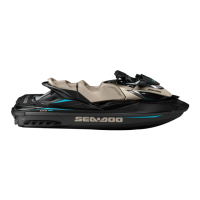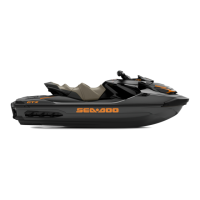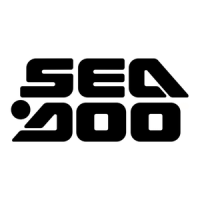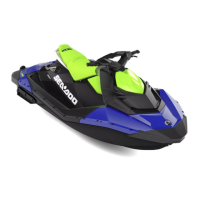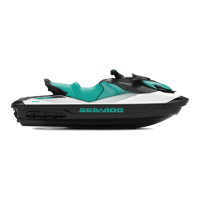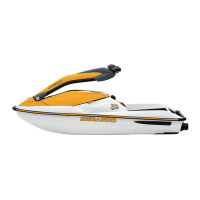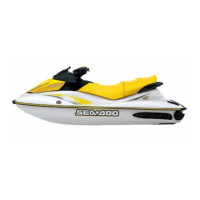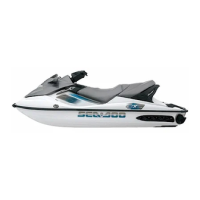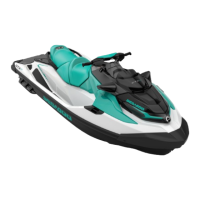
Do you have a question about the SeaDoo GTX Series 2022 and is the answer not in the manual?
| Engine Type | Rotax 1630 ACE |
|---|---|
| Engine Displacement | 1630 cc |
| Seating Capacity | 3 |
| Hull Material | Fiberglass |
| Fuel Capacity | 70 L |
| Length | 345.1 cm |
| Width | 125.5 cm |
| Fuel Type | Unleaded gasoline |
| Hull Type | ST3 Hull |
Outlines routine maintenance tasks and intervals for the watercraft based on time or hours of operation.
Provides steps for preparing the watercraft for extended storage, including fluid changes and protection measures.
Details the necessary steps to prepare the watercraft for operation after a period of storage or winter months.
Covers specific procedures for unusual situations like towing in water, submerged watercraft, or water-flooded engines.
Describes the procedures for removing and installing the engine from the watercraft.
Covers the components, removal, and installation of the air intake system, including silencer and tube.
Details the exhaust system components, maintenance, testing, and replacement procedures.
Explains the closed and open loop cooling systems, components, maintenance, and troubleshooting.
Covers intercooler maintenance, flushing, leak testing, and component replacement.
Describes the engine management system (EMS), its components like ECM, and functions like RPM limiter.
Explains the iControl system, including Intelligent Throttle Control (iTC) and Intelligent Brake and Reverse (iBR).
Details the CAN network protocol, its function as a communication bus, and troubleshooting CAN problems.
Lists necessary tools and procedures for connecting diagnostic software (BUDS2) and troubleshooting communication issues.
Explains how the system monitors components, identifies fault codes, and provides information via indicator lights and messages.
Covers the iTC system, operating modes like Touring, Sport, ECO, and troubleshooting the throttle system.
Details the fuel tank and fuel pump system, including inspection, testing, and component removal/installation.
Explains the fuse box, relays, and ground distribution diagram for the electrical system.
Provides information on wiring harnesses, connectors, terminal extraction, and probing procedures.
Covers the charging system components, output testing, battery maintenance, and troubleshooting.
Details the starting system operation, logic, troubleshooting, and procedures for testing switches and solenoids.
Explains the D.E.S.S. system, its components, key types, beeper codes, and troubleshooting.
Covers the information center display, indicator lights, message displays, and testing procedures for the multifunction gauge.
Details steering system components, adjustments, and replacement procedures for parts like handlebars and steering columns.
Explains the iBR and VTS systems, including actuators, trim rings, and troubleshooting procedures.
Covers jet pump main components, inspection, leak testing, and procedures for impeller, wear ring, and shaft.
Details drive shaft inspection, removal, installation, and related components like floating rings and bellows.
Covers the removal and installation of various body components such as hood, covers, bumpers, and grilles.
Details hull components like inlet grates, ride plates, jet pump supports, thru-hull fittings, and sponsons.
Provides technical specifications for cooling, exhaust, fuel, electrical, steering, propulsion, weight, and dimensions.
Explains wiring diagram conventions, color codes, terminal identification, and component application.
